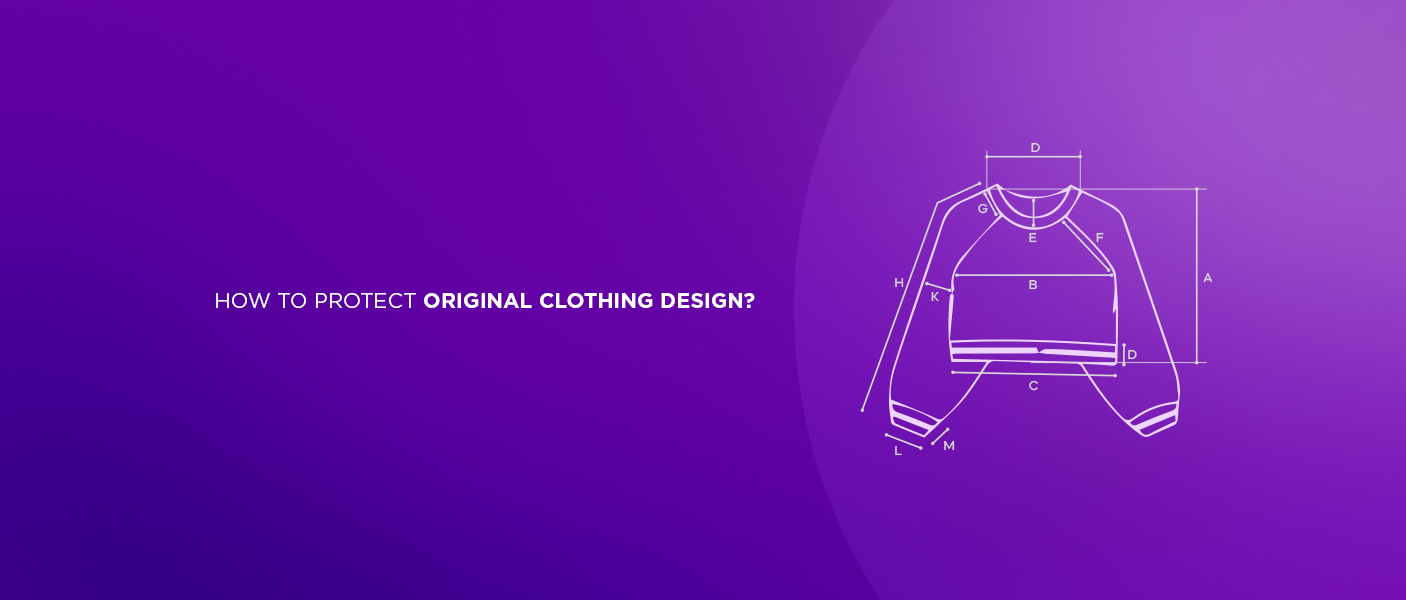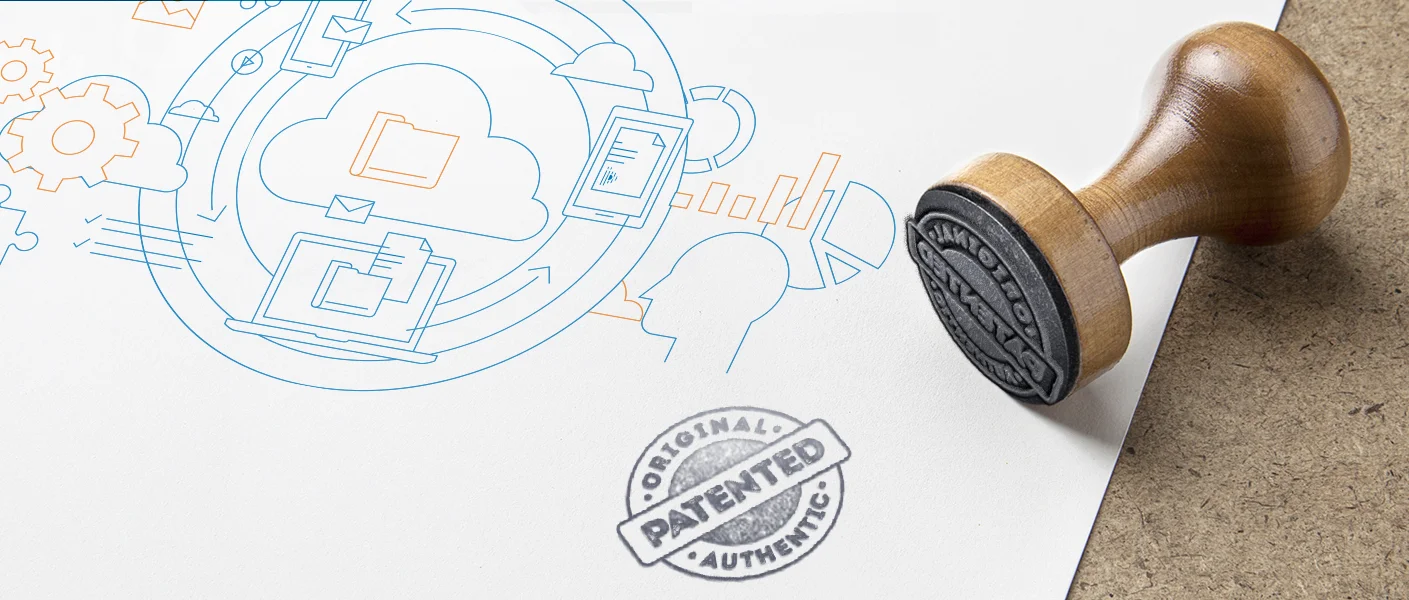Everything You Need To Know About Protecting Original Clothing Designs in The Textile Industry
December 27, 2022 By Khyati DaveWe all know that poetry, novels, movies, songs, computer software, paintings, and architecture can be copyrighted but, are there intellectual property rights protection for textile designs? Well, the answer is “it depends.” Confused? Let's dig into the details.
Intellectual Property in the Textile Industry
We all have seen gorgeous models setting the ramp on fire wearing weird-looking fashion most of the time, yet they all are unique. Ever thought about why? Well, it's the art of the designer. In fashion, haute couture is the art of designing and fabricating custom-fitted high-end designs from the ground up. A fashion show is more of a showcase of designers' wild imaginations, creativity, and inspiration for that season, rather than a piece of practical fashion, which is then turned into a more wearable line.
Now, like every other artistic creation, designing apparel is also a work of art that is unique and hence carries the risk of being replicated. Anyone can imitate your unique textile design ideas and reproduce them as their own and earn money. So, are there any preventative measures you can take? To a certain extent, yes.
A legal term for the ownership and protection of creative works of the human intellect, Intellectual Property (IP) is a tool used to protect intellectual property rights from unauthorized use by others. It can be anything from inventions; literary and artistic works; designs; and symbols, to even names and images used in commerce. Now, since textile is one such industry that includes a lot of creative and artistic work, it goes without saying that it must be safeguarded but how?
Can Clothing Design be Copyrighted?
Although ideas are not protectable, the artistic expression of an idea is, and for which we have Intellectual Property Law which is basically a mix of Trademarks, Copyright, and Patents. So, as far as a clothing design is considered, yes it can be copyrighted but with certain limitations.
In order to ensure that the textile industry continues to grow and develop, designers create new/original textile designs that represent a significant investment of money, time, and brainpower. Therefore, the protection of such industrial designs (commonly called “designs”) becomes necessary, and for which we have The Designs Act, 2000 (Designs Act) an Act to consolidate and amend the law relating to the protection of designs while you can copyright the same under The Copyright Act, 1957 (Copyright Act) but not entirely.
Clothing is termed as a ‘useful article’ meaning a shirt, dress, clothing used for functions such as protection and warmth, or another article of clothing that is used by everyone to cover themselves and to meet public community decency standards. In the law's eyes, clothing serves a utilitarian purpose and things that are functional and utilitarian can’t be copyrighted.
However, there are certain elements in textile design that you can copyright. Only if you prove that the fabric is original and nonfunctional, meaning it isn't intended for clothing, then you might be able to get protection for your design.
What Can and Cannot be Copyrighted?
A textile design is not just a design to be imprinted on a fabric, it indicates a number of things from sketches, patterns, and cuts to colors. Now, here’s the answer to the most important question - what can be copyrighted? Well, the following can be protected under copyright law:
- the logo of your brand,
- a specific kind of fiber you discovered,
- an ornamental object/work,
- original sketches,
- graphic design,
- fabric print, if it meets the three requirements for protection: fixation, expression, and originality.
While you cannot copyright
- a color,
- cuts and pieces that make up the design,
- any particular clothing as a whole like saree, trousers, or common terms.
A signature or a unique color can be trademarked in some cases like for example - Louboutin’s famous red bottoms. You can also protect the manufacturing [clothing] of identical shape, cut, and dimensions with a design patent but unlike copyright, a design patent can prevent others from creating fashions that resemble your sketch.
Copyright Or Design Act? Under Whom to Register Your Design?
The Intellectual Property Rights Law in India provides protection to fashion design under three legislations i.e.
- The Designs Act, 2000,
- The Indian Copyright Act, 1957,
- The Trademarks Act, 1999,
That’s where the real confusion builds up for designers in determining under which Act should they register their design because, under the Copyright Act, 1957 (the “Copyright Act”), the artistic work related to printings/designs/patterns etched or imprinted on textiles/fabrics/apparel/garments are protected, whereas the printings/designs/patterns on textiles/fabrics/apparel/garments including finished haute-couture, designed garments, and designer prints are required to be registered under the Design Act.
Under the Design Act, "artistic" designs are excluded from design protection and are then protected under the Copyright Act. While section 2(d) of the Design Act expands on the term "design," it excludes any “artistic work” as defined in section 2(c) of the Copyright Act. Section 15 of the Copyright Act addresses such an existing overlap. In accordance with the section, designs registered under the Design Act are not protected by copyright.
As a result, by virtue of the Design Act, anyone who registers a design surrenders his or her rights under the Copyright Act. The design becomes ineligible for copyright protection once the article on which the design is applied has been produced more than fifty times through an industrial process, regardless of whether the Design Act permits it to be registered.
Whereas, trademark law is about protecting the brand or label. This law prohibits copied "labels" from misleading consumers into believing they are buying original designs. Even though counterfeits and fake labels are prohibited by law, it doesn’t provide any protection for the same fashion design when the pirates omit the label. That’s what is termed “Fashion Piracy” in the textile industry.
Fashion Piracy is an unauthorized and illegal reproduction or copying of an already made design. For example, even though the famous lehengas and designer outfits of reputed designers like Sabyasachi Mukherjee, Manish Malhotra, Ritu Kumar, and Rohit Bal are trademarked, the knockoffs - a close copy of the original creation sold under a different label and counterfeit - the exact copy of the original fashion design sold under the same label as the original which is also called a fake product, are available for cheap at Karol Bagh market and Chandini Chowk.
So, to seek design protection for your novel creation, the use of a fabric design has to be established very carefully because that's what will determine what form of intellectual property protection can be used and how long it takes to secure protection, the length of the protection, and how the intellectual property rights will be enforced. For this, it is advisable to approach a copyright attorney who can guide you well in the right direction.
Conclusion
Fashion is a constantly changing industry. The major reason why fashion designers refrain from registering their fashion designs particularly is that, by the time the design is eligible for trademark protection, it may already be out of style. Moreover, design protections are potentially available if a clothing design is "new and non-obvious" and provides some sort of novel disclosure meaning there hasn’t been a prior public disclosure of it before applying for design registration. Also, clothing design should be significantly distinguishable from known designs or combinations of known designs and should not display scandalous or obscene matter.
But, once registered, a design is protected for ten years and the overall visual appearance of the article is protected too. So, it is better to go through the copyright designs and patents act and register your design because even if the trend changes, you as the owner, will have the right to replicate or modify your design and create something new out of it anytime.
Or the better option is to approach an experienced copyright attorney of Parker and Parker Co. LLP to apply for registration without any hassles.





